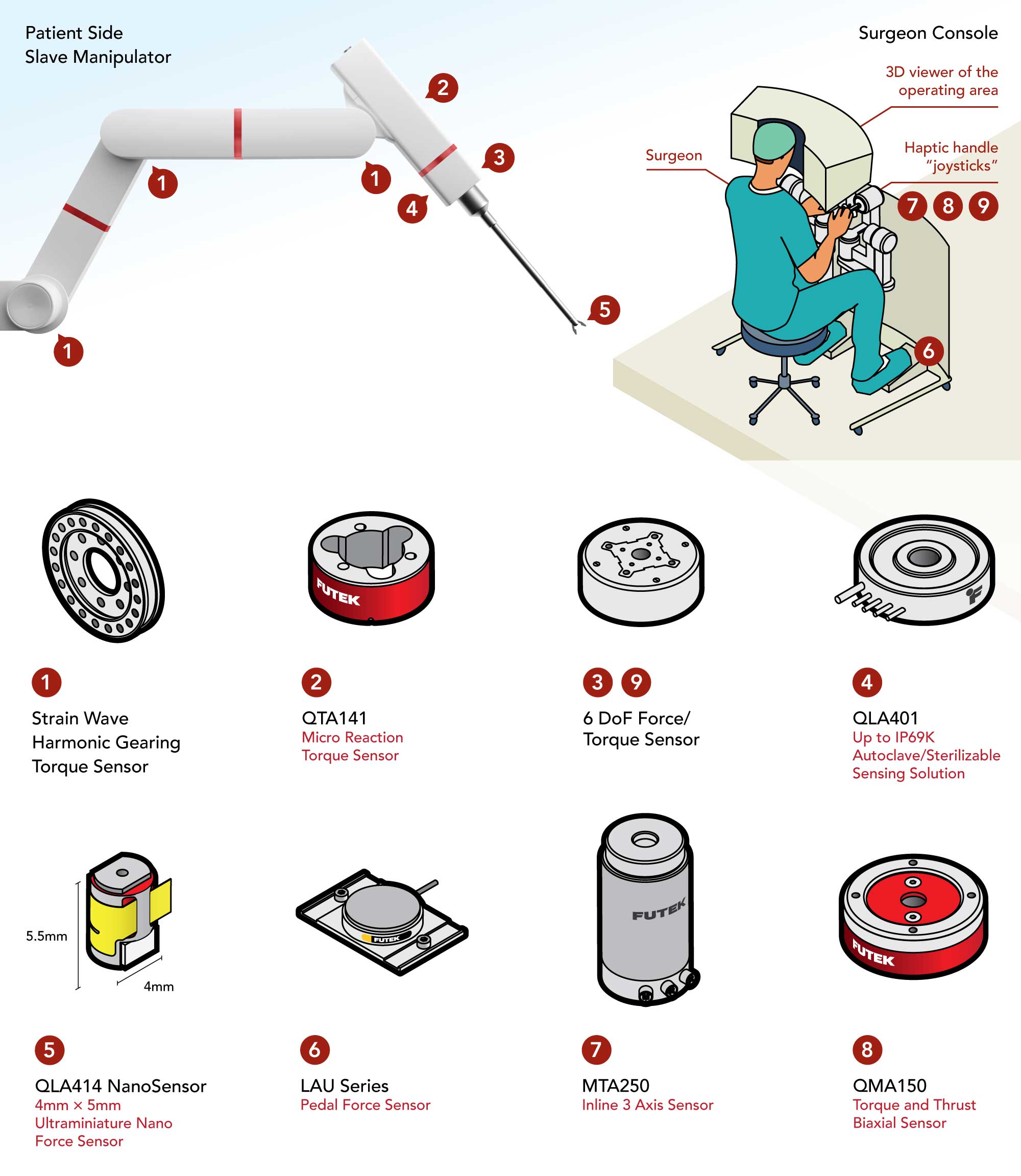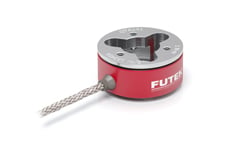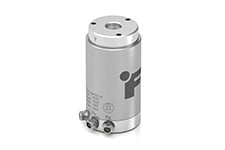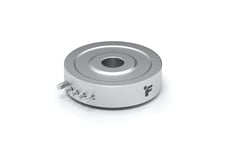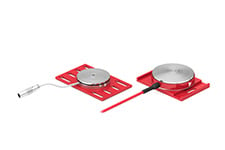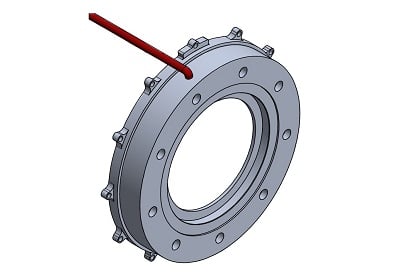What Sensors Do Surgical Robots Have?
Surgical robotics refers to the advanced integration of technology in medical procedures, where surgeons utilize robotic systems to enhance precision and control. These systems often comprise one or more robotic arms with Surgical Robot Sensors that accurately measure forces, meticulously engineered to follow the surgeon’s commands thereby creating a closed-loop feedback control system. Operating remotely from a console situated in close proximity to the patient, surgeons manipulate these arms with very low latency that provides exceptional accuracy. The interface for these robotic arms incorporates a joystick-like those found in video games, ingeniously designed to replicate the movements of the human wrist and hand. This design grants unparalleled dexterity, allowing for movements that mimic the surgeon’s natural gestures, and transposing the surgeon’s eyes and hands into the patient’s surgical site in a reliable and effective way, thereby facilitating complex surgical tasks with improved outcomes.
FUTEK’s engineering team has deep expertise in designing and customizing force and torque sensors to overcome and meet the challenges robotic surgery presents. Explore how FUTEK’s expertise in force and torque sensors is utilized in major surgical robotics systems, answering the question: “What Sensors Do Surgical Robots Have?
A. Patient Side Slave Manipulator
Surgical External Arm
1) Strain Wave Harmonic Gearing Torque Sensor
Mounted between the robot arm strain wave gearbox and mounting points, the strain wave gearing torque sensor measures the torque outputted during arm movement on each joint. This sensor refines the robot’s performance by reducing the inertia of the robot arm and improves dynamic performance through faster acceleration and faster settling time, offers high reduction ratios in a single stage with very low backlash, increases payload capacity, and thereby supports motion control as well as reducing the overall robot arm power consumption.
This results in being less expensive to implement as torque measurement can be implemented for selected joints only, less expensive to maintain and easier to service, as one sensor can be serviced or replaced without taking down other sensors.
2) QTA141 Micro Reaction Torque Sensor
This sensor’s low height of 10mm and unique geometry allow easy integration to most joints and motors and fit in multiple mounting configurations, thus providing a high degree of design flexibility and even late-stage addition to instruments. Mounted directly onto a brushless DC motor and its mounting points, the motor power can be controlled based on the torque closed-loop feedback on the torque measurement, providing dynamic feedback, precise control of the power that is used, ensuring smooth movement and enhancing robotic platform dexterity, a key parameter for robotic learning.
Surgical Instruments
3 and 9) 6 DoF Force-Torque Sensor
Force-torque transducer measures up to 6 different forces (Fx, Fy, Fz) and torque (Mx, My, Mz), in 3 spatial directions including translational motion, fulcrum point motion, and the surgical instrument’s rolling motion necessary to achieve the level of precision and dexterity of instrument tips with surgical instruments. This 6 DoF sensor is particularly important in complex surgical procedures such as measuring the interaction forces between the tissue and laparoscopic instrument where holding a steady position and precision motion control is necessary.
4) QLA401 Autoclavable Sensor
This monolithic hermetically sealed, low-profile autoclave through-hole load cell is designed to withstand the autoclave sterilization process of high temperature and high pressure while maintaining original specifications to incorporate force and torque measurements into sterile medical equipment which brings tactile and closed feedback critical on reusable tooling used in surgical robots. It has an IP69K rating, the highest protection against ingress of dust, liquids, and steam jets, meaning that it can withstand almost any harsh condition as well as over a thousand autoclave sterilization cycles.
5) QLA414 Nano Sensor
QLA414 4mm x 5mm Nano sensor is the smallest tension and compression force measurement solution of its kind (micro-miniature in-line load cell) ideal for surgical robotics and well suited for haptics force feedback robotic surgery. Due to its miniscule size (4x5 mm), ability to measure both tension and compression forces with high precision (±0.5% nonlinearity of rated output (RO) in 5lb and 10lb capacities), and unique mounting flexibility (M1 threaded double-sided mounting provisions, it helps engineers and surgeons overcome technical obstacles in designing and manufacture of a haptic feedback sensor for robotic surgery instruments.
B. Surgeon Console Master Controls/Manipulators
Foot Pedal
6) LAU Series Pedal Force Sensor
From its 17-4PH Stainless-Steel one-piece construction to its low profile design (Off-center loading error of <4%), this sensor offers a great force measurement system with impressive tolerances that is an ideal solution to measure the load applied to foot pedals in the foot switch panel in a surgeon console of a robotic surgery which the surgeon uses for effective controls such as robotic arm swapping, master clutching, instrument activation and camera controls.
Hand Joystick (Gimbal)
7, 8 and 9) Multi-Axis Sensors
Multi-axis sensors measure up to six different forces (Fx, Fy, Fz) and torques (Mx, My, Mz) in three spatial directions, converting them into an electrical output signal. These sensors are an ideal measurement solution for robotic surgeon consoles, as they capture the forces and moments of the hand joystick (i.e., gimbal) and precisely translate the surgeon's hand movements to the robotic arms and surgical instruments. They offer ultra-high precision, fast response, and stability. These specialized force/torque sensors are equipped with multiple strain gauge bridges, enabling precise measurement of forces and torques in one direction with minimal crosstalk interference from forces or moments applied in other directions. This capability is particularly important in precision motion control, maintaining a steady position, and enhancing end effector dexterity in robotic surgery.
Contact Us
Please Contact Us with questions.
What Sensors Do Surgical Robots Have?
Surgical robotics refers to the advanced integration of technology in medical procedures, where surgeons utilize robotic systems to enhance precision and control. These systems often comprise one or more robotic arms with Surgical Robot Sensors that accurately measure forces, meticulously engineered to follow the surgeon’s commands thereby creating a closed-loop feedback control system. Operating remotely from a console situated in close proximity to the patient, surgeons manipulate these arms with very low latency that provides exceptional accuracy. The interface for these robotic arms incorporates a joystick-like those found in video games, ingeniously designed to replicate the movements of the human wrist and hand. This design grants unparalleled dexterity, allowing for movements that mimic the surgeon’s natural gestures, and transposing the surgeon’s eyes and hands into the patient’s surgical site in a reliable and effective way, thereby facilitating complex surgical tasks with improved outcomes.
FUTEK’s engineering team has deep expertise in designing and customizing force and torque sensors to overcome and meet the challenges robotic surgery presents. Explore how FUTEK’s expertise in force and torque sensors is utilized in major surgical robotics systems, answering the question: “What Sensors Do Surgical Robots Have?
A. Patient Side Slave Manipulator
Surgical External Arm
1) Strain Wave Harmonic Gearing Torque Sensor
Mounted between the robot arm strain wave gearbox and mounting points, the strain wave gearing torque sensor measures the torque outputted during arm movement on each joint. This sensor refines the robot’s performance by reducing the inertia of the robot arm and improves dynamic performance through faster acceleration and faster settling time, offers high reduction ratios in a single stage with very low backlash, increases payload capacity, and thereby supports motion control as well as reducing the overall robot arm power consumption.
This results in being less expensive to implement as torque measurement can be implemented for selected joints only, less expensive to maintain and easier to service, as one sensor can be serviced or replaced without taking down other sensors.
2) QTA141 Micro Reaction Torque Sensor
This sensor’s low height of 10mm and unique geometry allow easy integration to most joints and motors and fit in multiple mounting configurations, thus providing a high degree of design flexibility and even late-stage addition to instruments. Mounted directly onto a brushless DC motor and its mounting points, the motor power can be controlled based on the torque closed-loop feedback on the torque measurement, providing dynamic feedback, precise control of the power that is used, ensuring smooth movement and enhancing robotic platform dexterity, a key parameter for robotic learning.
Surgical Instruments
3 and 9) 6 DoF Force-Torque Sensor
Force-torque transducer measures up to 6 different forces (Fx, Fy, Fz) and torque (Mx, My, Mz), in 3 spatial directions including translational motion, fulcrum point motion, and the surgical instrument’s rolling motion necessary to achieve the level of precision and dexterity of instrument tips with surgical instruments. This 6 DoF sensor is particularly important in complex surgical procedures such as measuring the interaction forces between the tissue and laparoscopic instrument where holding a steady position and precision motion control is necessary.
4) QLA401 Autoclavable Sensor
This monolithic hermetically sealed, low-profile autoclave through-hole load cell is designed to withstand the autoclave sterilization process of high temperature and high pressure while maintaining original specifications to incorporate force and torque measurements into sterile medical equipment which brings tactile and closed feedback critical on reusable tooling used in surgical robots. It has an IP69K rating, the highest protection against ingress of dust, liquids, and steam jets, meaning that it can withstand almost any harsh condition as well as over a thousand autoclave sterilization cycles.
5) QLA414 Nano Sensor
QLA414 4mm x 5mm Nano sensor is the smallest tension and compression force measurement solution of its kind (micro-miniature in-line load cell) ideal for surgical robotics and well suited for haptics force feedback robotic surgery. Due to its miniscule size (4x5 mm), ability to measure both tension and compression forces with high precision (±0.5% nonlinearity of rated output (RO) in 5lb and 10lb capacities), and unique mounting flexibility (M1 threaded double-sided mounting provisions, it helps engineers and surgeons overcome technical obstacles in designing and manufacture of a haptic feedback sensor for robotic surgery instruments.
B. Surgeon Console Master Controls/Manipulators
Foot Pedal
6) LAU Series Pedal Force Sensor
From its 17-4PH Stainless-Steel one-piece construction to its low profile design (Off-center loading error of <4%), this sensor offers a great force measurement system with impressive tolerances that is an ideal solution to measure the load applied to foot pedals in the foot switch panel in a surgeon console of a robotic surgery which the surgeon uses for effective controls such as robotic arm swapping, master clutching, instrument activation and camera controls.
Hand Joystick (Gimbal)
7, 8 and 9) Multi-Axis Sensors
Multi-axis sensors measure up to six different forces (Fx, Fy, Fz) and torques (Mx, My, Mz) in three spatial directions, converting them into an electrical output signal. These sensors are an ideal measurement solution for robotic surgeon consoles, as they capture the forces and moments of the hand joystick (i.e., gimbal) and precisely translate the surgeon's hand movements to the robotic arms and surgical instruments. They offer ultra-high precision, fast response, and stability. These specialized force/torque sensors are equipped with multiple strain gauge bridges, enabling precise measurement of forces and torques in one direction with minimal crosstalk interference from forces or moments applied in other directions. This capability is particularly important in precision motion control, maintaining a steady position, and enhancing end effector dexterity in robotic surgery.
